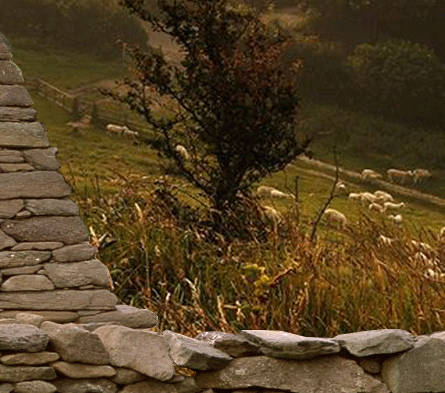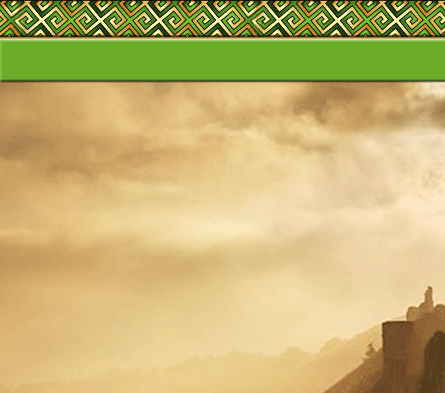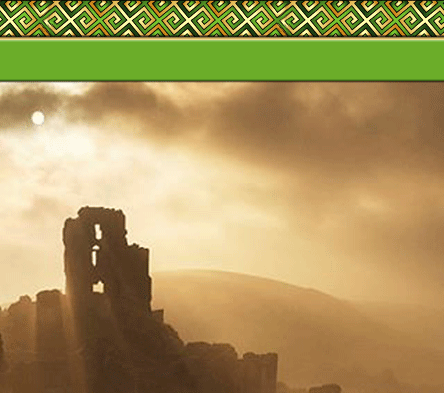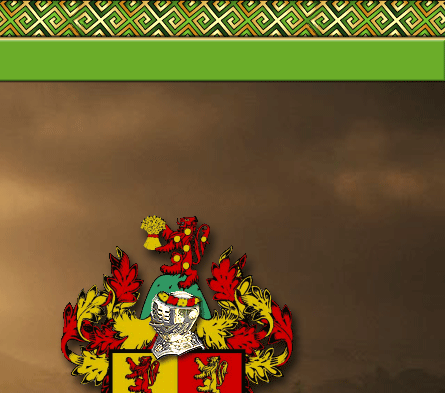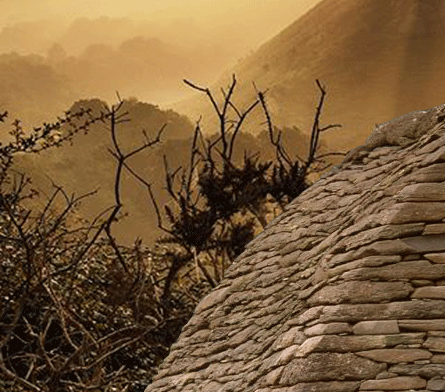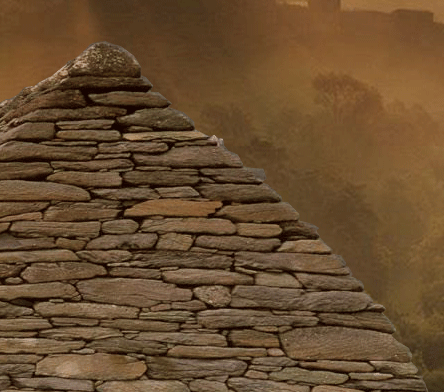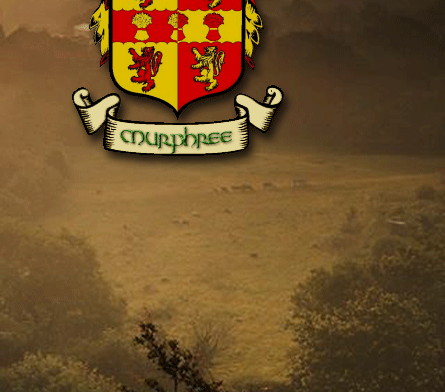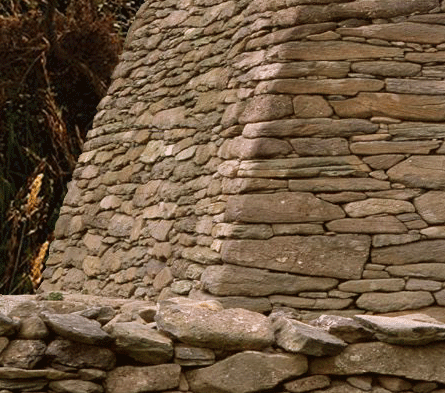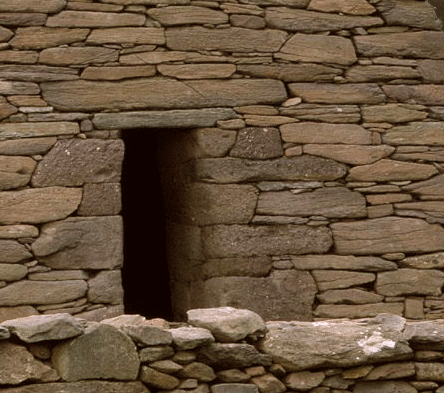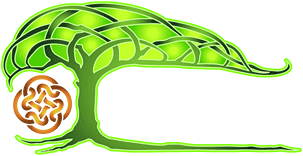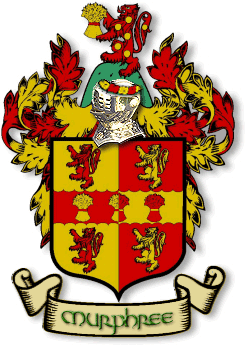Copyright © Charles H. Murphree 1999-2014 All rights reserved
Family identification was practiced in northern Europe even before the Norman Conquest. Beryl Platts, author of Origins of Heraldry, believes that all heraldry in England is the derivation of the heraldic devices brought by the families who accompanied William the Conqueror.
The bearing of coats of arms is not regulated in most countries, including the United States. While there is no reason we cannot enjoy the decoration of a coat of arms associated with someone centuries ago who shared our surname, we should be aware that this is all it is - a decoration.
The Murphree coat of arms portrayed on this site has been used as a decoration on its publications by the Murphree Genealogical Association (MGA) since 1963. The coat of arms was researched by MGA charter member, Lois Weatherspoon West. Mrs. West also had a motto associated with the coat of arms, Fortis Et Hospitalis (Brave and Hospitable.) I have, through my own personal research, found examples of this coat of arms both with and without the motto. There is some basis for the choice of this particular arms as it was originally the coat of arms of Murphy of Meath and Dublin, Ireland. The ancestors of our Daniel Murphree are alleged to have been from Dublin. Since Mrs. West's records have not been located, it might be prudent for some diligent genealogist to research the descendants of this Murphy of Meath and Dublin. We should continue to look for any clue that might enable us to make the connection to Ireland that has eluded Murphree researchers for so long.
A coat of arms consists of several parts; the shield, the mantling (said to represent the bearers cloak), the helm (or helmet), the wreath, charges, and the crest (whatever appears above the helm - not all arms have crests.) The official written description of the coat of arms is called the "blazon of arms." The blazon may seem like a foreign language, but it is simply a system of code words to denote colors, placement, and styling by using an economy of words
The Blazon of Arms for the Murphree Coat of Arms is as follows;
Arms: (shield): "Per pale, or and gu. on a fess engr. betw. four lions ramp. three garbs all counterchanged." (Divided vertically gold and red on the middle third engrailed between four lions attacking three wheat sheafs all counter changed.)
Crest: "On a mount vert a lion ramp. gu. bezantee holding in the forepaws a garb or."
(On a green mound a red lion attacking sprinkled with gold coins, holding in the forepaws
a gold wheat sheaf.)
Scholars vary in their opinion concerning the reliability of any "commonly held" historic
meanings for coats of arms and crests but the most commonly accepted meanings for
the symbols and colors depicted on the Murphree coat of arms are as follows;
Gold (Or): Generosity and elevation of the mind.
Red (Gules): Warrior or martyr; Military strength and magnanimity.
Green (Vert.): Hope, joy, and loyalty in love.
Lion: Dauntless courage.
Wheat Garb or Sheaf: The harvest of one's hopes has been secured.
Gold Coins: Wealth attained.
Historians once theorized that a coat of arms enabled a knight to be recognized by his followers during battle. Individual coats of arms became hereditary, just as a knight inherited the right to lead or the duty to follow another leader in battle. Later historians dispute this theory because some knights did not have any followers. It is more likely that the depiction of arms on a shield was a form of individual vanity rather than a practical military device.
The oldest documented example of a coat of arms borne on a shield is the one King Henry I of England is said to have bestowed on his son-in-law, Geoffrey Plantagenet, Count of Anjou, in 1127 A.D. The azure shield bore four gold lions rampant.
Knights in battle displayed their colors (Coat of Arms) for identity as well as personal vanity.
